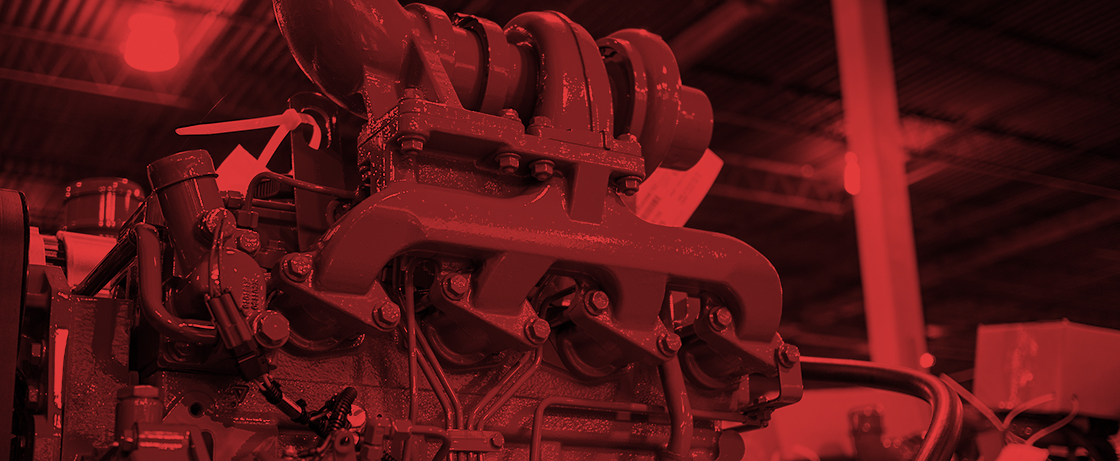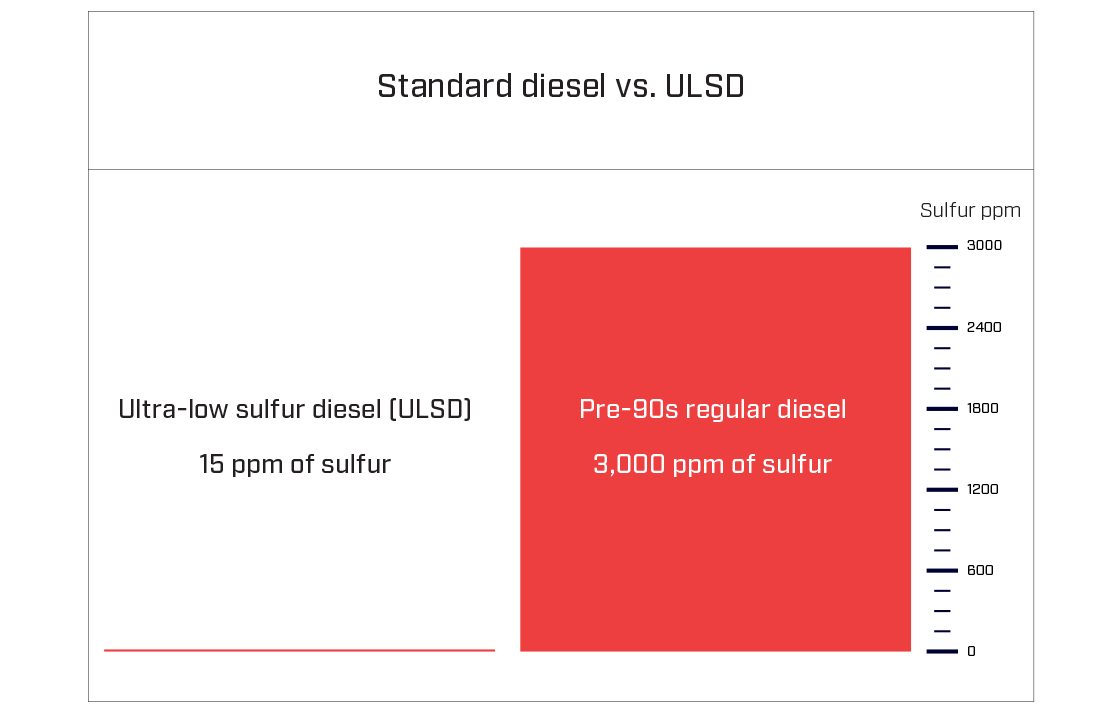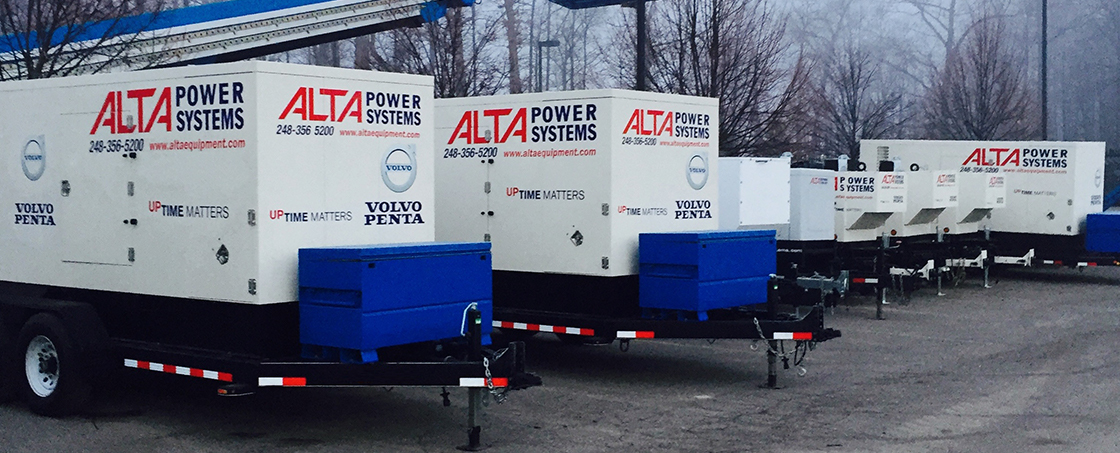
Diesel fuels our economy. Many of the industries that make our day-to-day lives a possibility —farming, construction, infrastructure and more— depend on diesel to power their equipment.
In the 1990s, the Environmental Protection Agency (EPA) started phasing in emissions regulation for off-road diesel applications to reduce harmful pollutants. The latest iteration of these phased regulations —Tier 4 emissions regulations— aimed to reduce harmful pollutants by as much as 90% over unregulated levels.
This forced diesel generator and engine manufacturers to develop new and innovative solutions to curtail carbon emissions and provide reliable, clean energy using diesel.
Clean diesel technology is reliable, proven and available today at a lower cost than other green options. And while battery and renewable energy sources continue to be researched, clean diesel is needed to fill the gaps, providing the energy pulse American industry needs to keep moving forward.
Meeting Tier 4 regulations through technological innovation
We are amidst the renaissance of clean diesel power — clean diesel engines produced today are vastly different from those produced just five years ago.
Advances in the engines themselves and the fuel they use, as well as after treatment technology have resulted in significant drops in the emission of harmful pollutants from diesel-powered equipment.
Here’s why diesel is a viable source of clean energy:
Engine enhancements and innovations
Tier 4 diesel engines are designed to optimize fuel efficiency while minimizing pollution. There are many lines of Tier 4 engines from Kubota, John Deere, Volvo Penta and others.
Whereas fuel injection used to happen mechanically, Tier 4 engines are largely computer-controlled. This means that a computer will continually monitor the real-time conditions of the engine, adjusting the fuel / air mixture in the combustion chamber to maximize performance and minimize the emission of harmful pollutants.
In effect, this type of advanced combustion technology converts fuel to energy more efficiently —by as much as 5%— while aiding in compliance with the EPA’s stringent Tier 4 emissions regulations.
The emergence of ultra-low sulfur diesel (ULSD)
Tier 4 engines are required to run off of ultra-low sulfur diesel (ULSD), which contains only 15 parts per million (ppm) of sulfur. Prior to the early 90s, 3,000 ppm was the standard. The switch to ULSD has resulted in a drastic reduction in sulfur emissions without a perceptible difference in energy output. And ULSD is readily available across the country at fueling stations.

Advanced emission control systems
Newer engine designs are fitted with advanced emission control systems to filter out any nitrogen oxide (NOx) and particulate matter (PM) before releasing exhaust to the environment.
While these systems vary from engine to engine, they typically come in three parts: Selective catalytic reduction (SCR), exhaust gas recirculation (EGR) and a diesel particulate filter (DPF).
-
Selective catalytic reduction (SCR): Converting NOx to water and nitrogen gas
Selective catalytic reduction (SCR) is a proven way to reduce NOx levels in diesel emissions. Using diesel exhaust fluid (DEF), or urea solution, an SCR system transforms NOx into nitrogen gas and water, naturally occurring substances in our environment.
-
Exhaust gas recirculation (EGR): Lowers peak combustion temperatures, reduces NOx production
Exhaust gas recirculation (EGR) systems direct a portion of exhaust gas back into the combustion chamber, replacing some of the oxygen. Not only does this reduce the amount of NOx produced during combustion, but it also lowers the peak combustion temperatures. This allows for heightened fuel economy, while lowering the cooling needs of your unit.
-
Diesel particulate filters (DPF): Filtering out particulate matter
The diesel particulate filter (DPF) does exactly what it sounds like it might do: Filter particulate matter (PM) out of diesel exhaust. There are many DPF designs: Some active some passive, some a mixture of both.
A case study on developing some of the first Tier 4 rental generators

CK Power was at the forefront of Tier 4 generator technology, having designed and manufactured some of the first compliant rental gen sets in North America.
In partnership with Alta Equipment Company —a leading construction equipment distributor— our team designed a fleet of multi-use rental sets that not only overcame compliance challenges, but were also user-friendly and affordable.
The units, hailed at the time as the latest and greatest in Tier 4 technology, were sturdy and powerful. Since they first debuted in 2015, the prime power sets have been used in applications ranging from manufacturing to construction and beyond.
To learn more about how diesel energy stacks up in the modern world, read our guide comparing clean diesel to battery, explaining the benefits, drawbacks and applications of each. You’ll also learn more about how manufacturers have responded to diesel emissions regulations, making diesel one of the cleanest and most inexpensive energy options available today. Download the guide.

